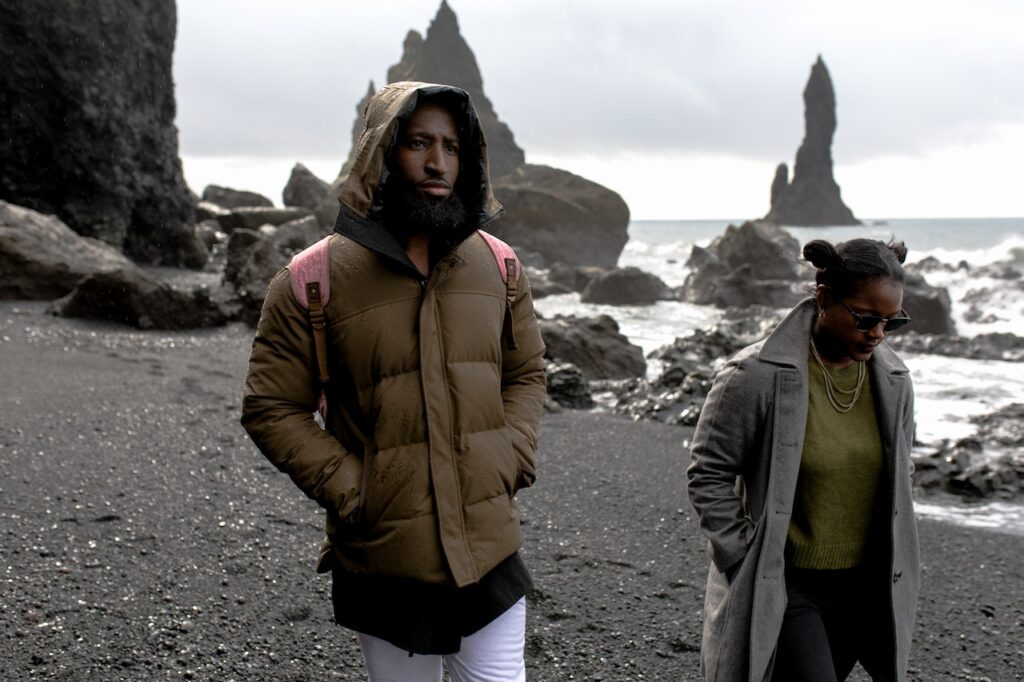Meeting the growing need for multicultural stock photographs

By DERON SNYDER (as published by SRB Communications)
In terms of diversity and inclusion (DEI) in visuals, marketing has come a long way since two candidates for the Fairfax, Virginia County School Board handed out campaign materials in 2011.
First, was Louise Epstein, who distributed signs and fliers that were graced with three smiling, multicultural teenagers in caps and gowns. Then, Jane Strauss circulated her literature, an election brochure that featured the identical teens in a similar pose.
Pickings were slimmer back then and multicultural representation wasn’t much of an issue, at least not in mainstream media. SRB Communications has been a champion for inclusion since our founding, well before a national awakening in 2020. We are grateful that our clients and others see the value of accurate snapshots because there’s no excuse for excluding diverse subjects.
Stock photography captures ordinary people doing ordinary things. Consciously or not, it conveys narratives about race, class and gender. But collections from the leading photo agencies have traditionally included few individuals who aren’t white or from a European culture. In Shutterstock’s 2021 global study of more than 2,700 marketers, almost half said “it can be difficult to reflect their brand with racial and ethnic diversity visually.”
Thankfully, there’s a growing stockpile to choose from – and with good reason. The same survey found “65% of marketers agree racial and ethnic diversity is an important factor when targeting campaign audiences.”
At SRB Communications, we understand that diverse representation requires a multilayered approach, not a skin-deep broad brush. Companies can sprinkle a few Black or brown faces into marketing campaigns and STILL miss the mark if there’s too much sameness. Everyone isn’t in the category of urban, college-educated hipster. Some people of color are more country, old- fashioned and blue collar. Others are older or heavier, with wide-ranging lifestyles. And that’s before addressing physical distinctions like complexion, features and hairstyles.
Generations of stock imagery focused on white men, women and children – in actual photos as well as cartoons and illustrations – as if non-whites were nonexistent. The leading photo agencies have gradually moved away from that model, adding new libraries and filter options for diversity, even a guide on improved searches for visual storytelling. According to research in 2020 from Getty Images, nearly 80% of respondents said ads can’t just include people of various ethnicities, backgrounds and appearances. They must do better at capturing people’s true lifestyles and cultures.
Some industry leaders have bolstered the diversity in their stock photo collection to satisfy growing need and demand. Getty partnered with Citi on a DEI toolkit to help the financial giant’s marketing teams incorporate underrepresented communities in authentic visuals. Adobe partnered with a group of creatives (Diversity Photos, now Creative Flame) to stock a collection with more than 4,000 multicultural images. Shutterstock partnered with the DREAM Initiative (Driving Racial Equity in Aesthetic Medicine) for a gallery of royalty-free images inclusive of gender, color, race, age and abilities.
Diverse representation is particularly vital in the public health space, among SRB Communications’ areas of interest. Vaccination rates among Black Americans lagged far behind whites’ rate until renewed efforts by public-private partnerships and community-based organizations. Successful campaigns require diverse images and Black-owned stock photo agencies didn’t need a racial reckoning to understand the importance.
Earlier this year, Pocstock partnered with Real Chemistry to bring more culturally relevant and inclusive visuals to healthcare media. “With the inequities in healthcare and the intersectionality of consumer groups, this is an essential category to improve on with DEI,” Pocstock executive DeSean Brown told Medical Marketing & Media.
Finding suitable stock photos isn’t as difficult, but that’s not the only challenge for brands seeking to connect with multicultural audiences. SRB Communications has more than 30 years of experience in such messaging. Helping companies extend their reach and expand their business in various ethnic communities is a core principle.
Resources for multicultural stock photography:
CreateHER Stock: Offering the Gift of Melanin in Visual Abundance
Lyrical Host’s 25 Culturally Diverse Stock Photo Websites (Free & Paid)
Mocha: Multicultural Royalty-Free Stock Media
Nappy: Beautiful Photos of Black and Brown People, for Free
 Follow
Follow
